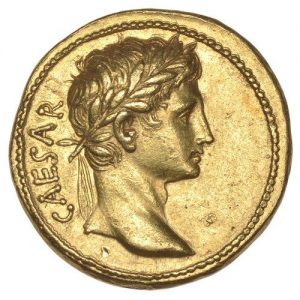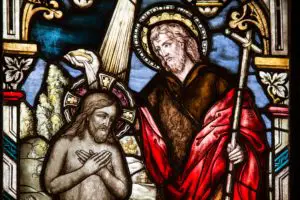Scripture tells us that God is spirit.[1] As such, He is invisible and therefore, has not and cannot be seen:[2]
1 John 4:12a (NASB) No one has seen God at any time… (emphasis added)
1 Timothy 6:16 (NASB) [God] who alone possesses immortality and dwells in unapproachable light, whom no man has seen or can see. To Him be honor and eternal dominion! Amen.[3] (emphasis added)
Even though we cannot see God with our natural eye, nevertheless, we can “see” Him by looking at the one who images God, that is, Jesus, who was sent on God’s behalf:
John 12:44-45 (NASB) And Jesus cried out and said, “He who believes in Me, does not believe in Me but in Him who sent Me. 45 “He who sees Me sees the One who sent Me. (emphasis added)
Jesus is the image of God
When we observe Jesus through the Scriptures, we “see” God because he perfectly emulated the Father. As God’s agent, Jesus did only the Father’s will, and he spoke only the Father’s words. In this way, Jesus revealed the invisible God to mankind. But some believe that when Paul wrote that Jesus is “the image of God,” he meant that Jesus is himself, God.
Colossians 1:15 (NASB) He [Jesus] is the image of the invisible God, the firstborn of all creation. (emphasis added)
2 Corinthians 4:4 (NASB) in whose case the god of this world has blinded the minds of the unbelieving so that they might not see the light of the gospel of the glory of Christ, who is the image of God. (emphasis added)
 The word image in both of these passages is the Greek word eikôn, which means image, form, likeness, and representation. We intuitively know that an image is not the original. For example, when you see your image or reflection in the mirror, you know that there aren’t two of you. The reflection in the mirror is like you, but it is not literally you. Similarly, Jesus reflects who God is, but he is not God. If the Christ was God, Paul could have said so plainly, but he didn’t. Instead, he wrote that Jesus is the eikôn of God.
The word image in both of these passages is the Greek word eikôn, which means image, form, likeness, and representation. We intuitively know that an image is not the original. For example, when you see your image or reflection in the mirror, you know that there aren’t two of you. The reflection in the mirror is like you, but it is not literally you. Similarly, Jesus reflects who God is, but he is not God. If the Christ was God, Paul could have said so plainly, but he didn’t. Instead, he wrote that Jesus is the eikôn of God.
The following passage further illustrates what the word eikôn (image) means. The Pharisees wanted to trap Jesus into saying something that would get him into trouble with the Roman authorities. So they asked him if God’s law permitted paying taxes to Caesar. Jesus answered:
Matthew 22:19-21 (NASB) “Show Me the coin used for the poll-tax.” And they brought Him a denarius. 20 And He *said to them, “Whose likeness and inscription is this?” 21 They *said to Him, “Caesar’s.” Then He *said to them, “Then render to Caesar the things that are Caesar’s; and to God the things that are God’s.”
The word likeness in this passage is the word eikôn. Caesar’s image or likeness  was on the coin. It represented Caesar, but was obviously not Caesar. Indeed, we would agree that an image is never the original it reflects. Jesus is not God, but his life was a reflection of the God who sent him.
was on the coin. It represented Caesar, but was obviously not Caesar. Indeed, we would agree that an image is never the original it reflects. Jesus is not God, but his life was a reflection of the God who sent him.
If being in the image of God means that Jesus is deity, then we must be God as well, for Scripture says that we were made in God’s image:
Genesis 1:26-27 (NASB) 26 Then God said, “Let Us make man in Our image, according to Our likeness; and let them rule over the fish of the sea and over the birds of the sky and over the cattle and over all the earth, and over every creeping thing that creeps on the earth.” 27 God created man in His own image, in the image of God He created him; male and female He created them.[4]
Even though we have been made in God’s image, we are not God. As His creation, made in His likeness, we instead reflect the wonder of who He is:
Romans 1:20 (NASB) For since the creation of the world His invisible attributes, His eternal power and divine nature, have been clearly seen, being understood through what has been made, so that they are without excuse.[5] (emphasis added)
Sin marred our reflection of God and made it necessary for us to be made new in order that we might reflect the true image of God:
Colossians 3:9-10 (NASB) Do not lie to one another, since you laid aside the old self with its evil practices, 10 and have put on the new self who is being renewed to a true knowledge according to the image [eikôn] of the One who created him— (emphasis added)
But even with a renewed image that more accurately reflects God, we still are not God, and neither is Jesus, because being called “the image of God’ does not equate with being God.
It’s true that no one has seen God at any time. But because Jesus fully obeyed the Father, when we look at Jesus, we see the God who sent him. And thanks to the transforming power of God, we can be renewed into the same image:
2 Corinthians 3:18 (NASB) But we all, with unveiled face, beholding as in a mirror the glory of the Lord, are being transformed into the same image [eikôn] from glory to glory, just as from the Lord, the Spirit.
[1] John 4:24, https://www.biblegateway.com/passage/?search=John+4%3A24&version=NASB
[2] Exodus 33:20; 1 Timothy 1:17
[3] This verse, and others, cannot apply to Jesus because multitudes have seen him and will see him in the future (Revelation 1:7), while God has not and cannot be seen.
[4] See also Genesis 9:6 and 1 Corinthians 11:7
[5] See also Psalm 19:1-6



